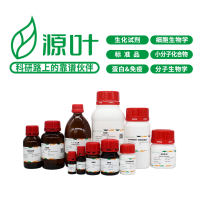GPI-Anchored Fusion Proteins
互联网
931
Although most integral membrane proteins are bound to the lipid bilayer by a hydrophobic polypeptide transmembrane domain, a small functionally diverse group of proteins is uniquely anchored to the plasma membrane by the covalent attachment of a complex phospolipid anchor to the carboxyl terminus of the protein. This glycosylphosphatidyl inositol (GPI) anchor consists of a hydrophobic phospholipid, phosphatidylinositol, which attaches the carboxyl end of the protein to the outer lipid layer of the plasma membrane via a variable glycan chain and phosphoethanolamine (1 ,2 ). The functional role of the anchor is not clearly established, and proposals range from cell motility to cell signaling (1 ,3 ,4 ). The GPI-anchored protein can be released from the cell membrane by the action of a specific bacterial phospholipase, phosphatidylinositol phospholipase C (PI-PLC) (5 ). The PI-PLC cleaves the anchor at the phosphodiester bond between the phophinositol group and the lipid portion of the anchor (Fig. 1 ). Diacyglycerol is left in the outer cell membrane, while the protein is released in a water-soluble form into the media with the hydrolyzed portion of the GPI anchor. Therefore, it is possible to harvest natural and recombinant GPI-anchored proteins in a controlled fashion by removing the cell growth medium and replacing it with a much smaller volume of PI-PLC solution (6 –8 ). This procedure yields a concentrated preparation of the desired protein that is relatively free of contaminating proteins contributed by the cells or the medium.








